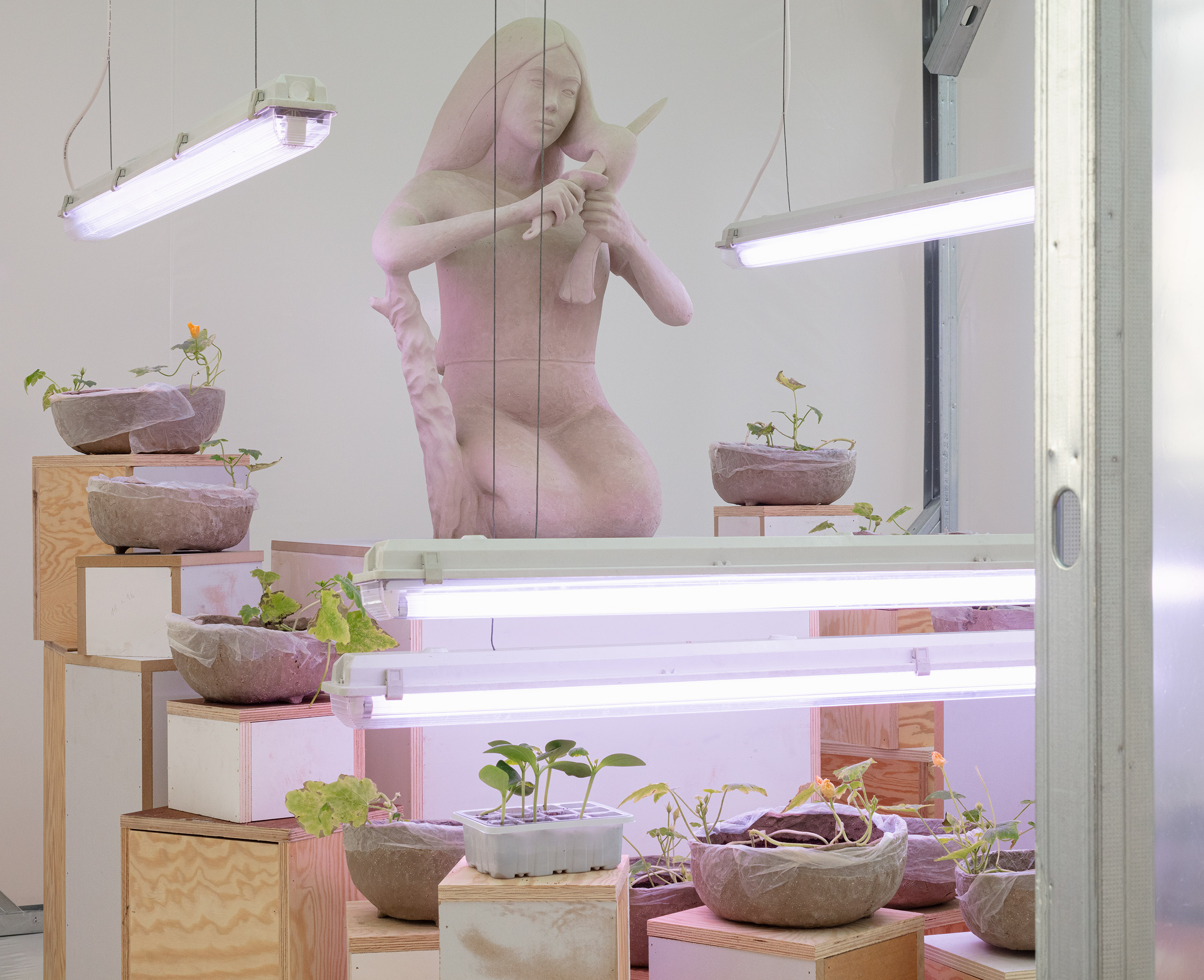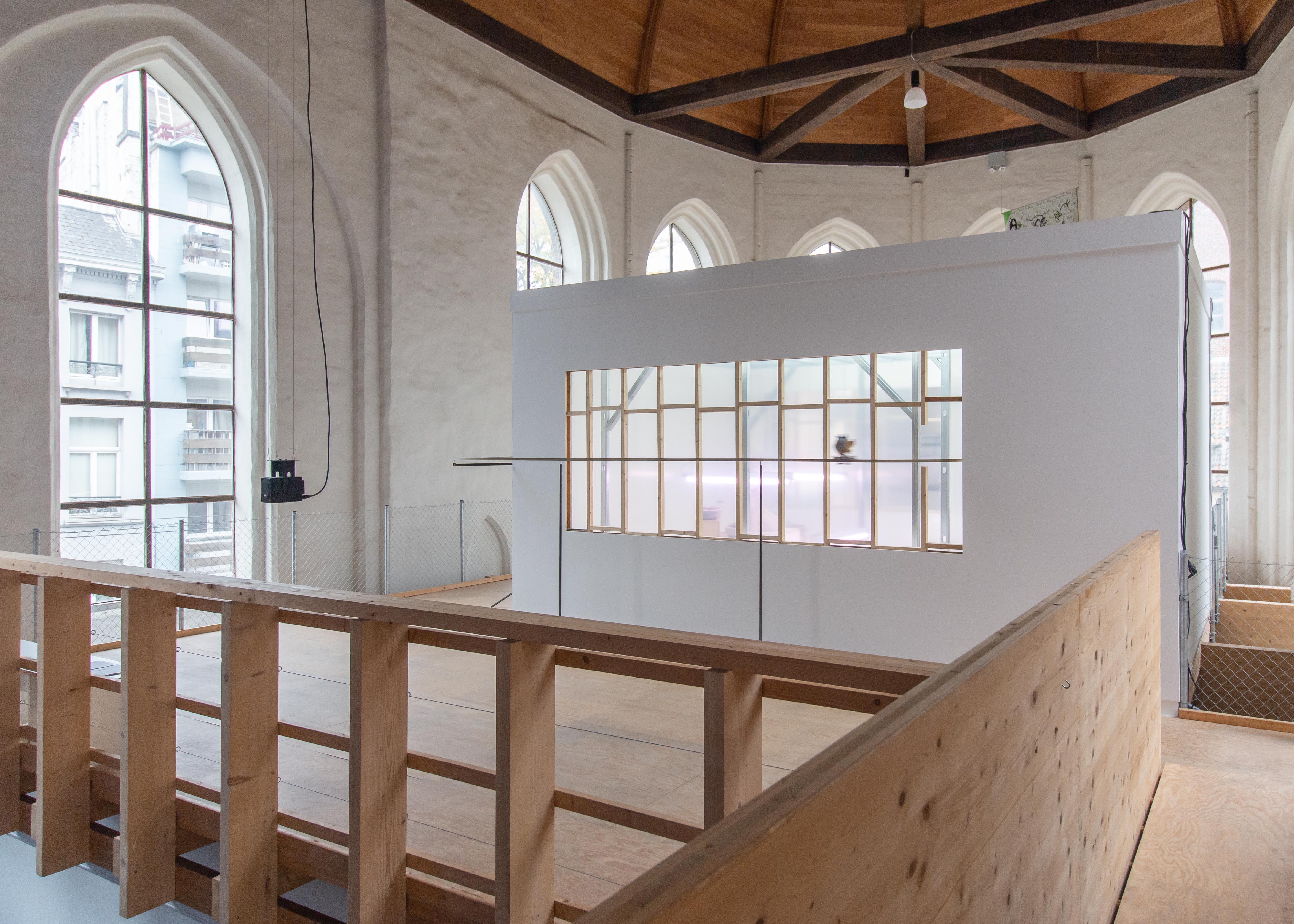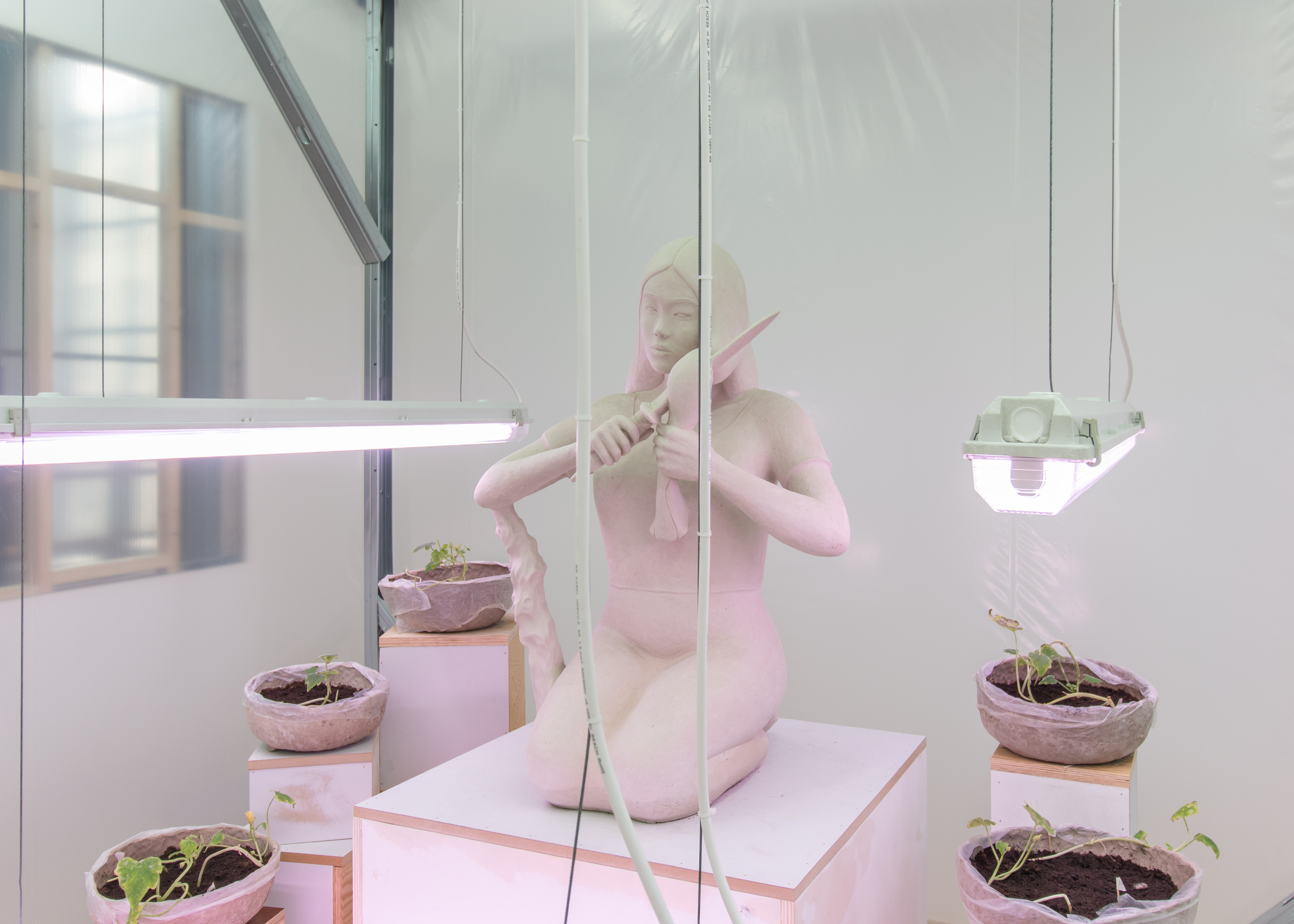Ghost Eat Mud
Sept 23 - Dec 18, 2022
Kunsthal Gent, Ghent, Belgium























‘Ghost eat mud (鬼食泥)’ is a Cantonese expression illustrating the messy, murmur-rambling, disjunct ways one delivers their speech and thoughts.
In Pei-Hsuan Wang’s solo exhibition Ghost Eat Mud at Kunsthal Gent, citations of wonder from the artist and her family’s past are elaborated into compulsive and dynamic details. They take shape in sculptures, textile, plants, sound, and automated devices; and further muse upon the West’s geopolitical schemes in the Asia-Pacific, deliberate on childhood obsessions over pop culture characters, and pay tribute to the transnational journeys the artist’s loved ones made over the years.
At the core of these bio(mytho)graphical snippets is a perverse aspiration that aligns Westward advancement with upward mobility, as well as a boundless desire to nurture and propagate.
A Guide:
Mulan, Told By Mother
Audio recording of the artist’s mother telling the story of Mulan
4’43”
Train
Stuffed animal, motor, MDF, steel, aluminum, electrical parts, mixed media
The voice of the artist’s mother echoes throughout the church hall of the former 14th century monastery, telling the story of Mulan, a Chinese peasant woman who disguises herself as a man to join the army and becomes a beloved warrior.
A stuffed animal train that animates the video game persona ‘Sonic the Hedgehog’ charges round and round the space. It creates a ridiculous noise that obscures the audio story of Mulan. Every 10 minutes the train would stop for 10 seconds - it is in these moments of stillness that snippets of the story can be heard clearly:
“Today we are going to tell a story about Mulan. The story of Mulan has been told over and over again for the past 1500 years at least. Mulan was a young Chinese woman who disguised herself as a man and joined the army to save her father’s life and her country…”
Self Portrait as Mulan
Raw clay, grow lights, steel, wood, plastic, ventilation, soil, zucchini seedlings, misting system
Disney's 1998 film Mulan made a lasting imprint on the artist at a young age. Based on a poem written anonymously between 300-500s AD in China, the story of Mulan is a literary classic honoring bravery, gender fluidity, and the ‘dutiful daughter.’ Self Portrait As Mulan reimagines the iconic scene in Disney’s Mulan in which the young protagonist cuts off her long black hair and rides off into the night to join the army.
Situated in a greenhouse, Self Portrait as Mulan is accompanied by a number of zucchini plants. These tender seedlings are a tribute to the artist’s mother. Recently following her decision to relocate to Taiwan after living in the US for over a decade, the mother sneaked a collection of zucchini seeds on her flight back to Asia as memorabilia. The plants thrived for one season at her Taiwan rooftop garden, a sweet reminder of the daughters and grandchildren she had left behind across the continent.
A misting system generates a fine, lingering mist every hour for 10 seconds at the stroke of the the hour.
Horse
Steel, raw clay, acrylic resin, fiberglass, stoneware, pigment, glaze, wood, silk, stained glass window, vacuum-formed PETG, wood, tennis balls
Against the tall monastery windows one encounters a rocking horse. An homage to the artist’s sister and her children, the horse brings into mind Mulan’s trusted steed (in both the classic Chinese poem and Disney’s ’98 adaptation) as well as the Trojan horse. A portal where myths from different worlds soften into each other.
Encased within the horse’s body is a clay equine head. It is the original model from which a mold was made and a new piece was cast as seen atop the metal armature - instead of a lethal army, what lies inside the horse is the horse itself.
Motifs of pineapples and plum flowers embellish the horse. Pineapples are among the fruits that the artists’ grandmother grew in her orchard in central Taiwan. They are also a highly politicized Taiwanese export item synonymous in pronunciation with ‘fortune arrives.’ Plum blossoms are the disputed national flower of Taiwan. This floral identification was determined by the Nationalist government, which ruled mainland China until the communist takeover in 1949. Plum flowers are not native to the island of Taiwan. Their enshrinement symbolizes a removed dream with a glorified mainland origin and vision.
Two Sisters (installation, Horse, Ghost Eat Mud, Kunsthal Gent)
Stained glass window
The Xiang River Goddesses are said to be the two daughters of the supreme god Di. According to the classic text Guideways Through Mountains and Seas (山海經, pre-221 BCE), the two sisters roamed the depths of the Yangtze River in China, generating winds and rain and provoking unpredictable weathers across the fertile lands of the Yangtze tributaries.
Adapted from a woodblock print of the river goddesses made for a 17th century edition of the Guideways, the stained glass window is a tribute to the artist’s sister, who migrated to the US on her own at the age of 16 and remains a role model and inspiration to this day.
Friendship Tapestry
Cotton, nylon, silk, steel
In the late 50-60’s the US launched its food aid program in Taiwan. Bags of flour were sent to the island with branded slogans praising international cooperation and economic development. The flour sacks were made from cotton and repurposed by the civilians into children’s clothing.
Similar transformation was seen in the US since the Great Depression. Instead of propagandistic messaging, whimsical patterns adorned the flour and feed sacks, which were made into clothing or household items, contributing to the ‘thrifty fashion’ of the time. The pattern of the Aesop tale The Hare and the Tortoise, seen as the background on Friendship Tapestry, was among the thousands of patterns created.
Across the continent a few decades earlier, the Belgians received food aid from the US during WWI. The cotton bags carrying donated flour were later decorated with embroidery, lacework, and painting by Belgian women. These decorated pieces were sold to raise funds for war victims, and also gifted back to the Americans as tokens of gratitude.
Here, these elements are woven into a two-sided tapestry along with drawings by the artists’s niece and nephew – depicting Sonic the Hedgehog and his fast-running tracks, and a winking unicorn in manga style.